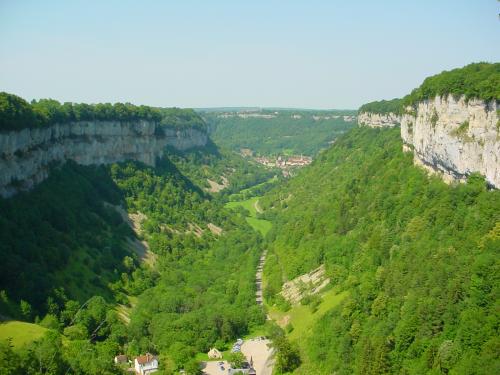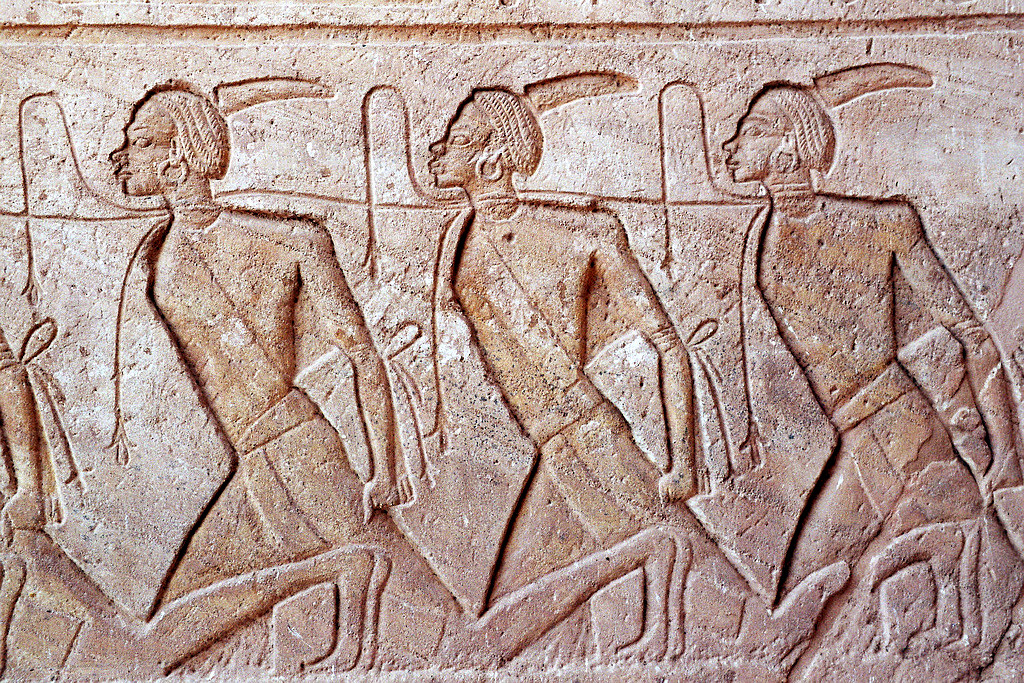|
Kucja Valley
The Kucja Valley ( sl, Kucja dolina) is a blind valley on the outskirts of Ljubljana, central Slovenia. Administratively, it belongs to the Dravlje District. The name may be derived from Slovene ''kucelj'' 'hill, rise', referring to the terminus of the valley. Geologically, it lies at the conjunction of a more gravelly layer with a more compact limestone layer. Mass graves The Kucja Valley is the location of two sites connected with extrajudicial killings after the Second World War: the Big Brezar Shaft Mass Grave ( sl, Grobišče Veliko Brezarjevo brezno) and the Kucja Valley Mass Grave ( sl, Grobišče v Kucji dolini). At the end of May 1945 over 800 people were killed and their bodies were thrown into the Big Brezar Shaft.Ferenc, Mitja, & Ksenija Kovačec-Naglič. 2005. ''Prikrito in očem zakrito: prikrita grobišča 60 let po koncu druge svetovne vojne''. Celje: Muzej novejše zgodovine Celje, p. 73. The victims were a mix of Slovenian and Croatian prisoners of war A pr ... [...More Info...] [...Related Items...] OR: [Wikipedia] [Google] [Baidu] |
Steephead Valley
A steephead valley, steephead or blind valley is a deep, narrow, flat bottomed valley with an abrupt ending. Such closed valleys may arise in limestone or karst landscapes, where a layer of permeable rock lies above an impermeable substract such as marl. Water flowing through a steephead valley leaves via one or more ponors or sinkholes. Blind valleys are typically dry at their lower ends. If the ponor cannot contain the high runoff during a flood event an intermittent flow may continue through the valley beyond the sink. Such a landform is called a semi-blind or half-blind valley. Development They are created by a stream flowing within the permeable rock and eroding it from within, until the rock above collapses opening up a steep narrow valley which is then further eroded by the stream running across the impermeable valley floor. At the head of the valley the stream emerges from the rock as a spring. Notable examples can be found in the Jura region of France, for examp ... [...More Info...] [...Related Items...] OR: [Wikipedia] [Google] [Baidu] |
Ljubljana
Ljubljana (also known by other historical names) is the capital and largest city of Slovenia. It is the country's cultural, educational, economic, political and administrative center. During antiquity, a Roman city called Emona stood in the area. Ljubljana itself was first mentioned in the first half of the 12th century. Situated at the middle of a trade route between the northern Adriatic Sea and the Danube The Danube ( ; ) is a river that was once a long-standing frontier of the Roman Empire and today connects 10 European countries, running through their territories or being a border. Originating in Germany, the Danube flows southeast for , ... region, it was the historical capital of Carniola, one of the Slovenes, Slovene-inhabited parts of the Habsburg monarchy. It was under House of Habsburg, Habsburg rule from the Middle Ages until the dissolution of the Austria-Hungary, Austro-Hungarian Empire in 1918. After World War II, Ljubljana became the capital of the So ... [...More Info...] [...Related Items...] OR: [Wikipedia] [Google] [Baidu] |
Slovenia
Slovenia ( ; sl, Slovenija ), officially the Republic of Slovenia (Slovene: , abbr.: ''RS''), is a country in Central Europe. It is bordered by Italy to the west, Austria to the north, Hungary to the northeast, Croatia to the southeast, and the Adriatic Sea to the southwest. Slovenia is mostly mountainous and forested, covers , and has a population of 2.1 million (2,108,708 people). Slovenes constitute over 80% of the country's population. Slovene, a South Slavic language, is the official language. Slovenia has a predominantly temperate continental climate, with the exception of the Slovene Littoral and the Julian Alps. A sub-mediterranean climate reaches to the northern extensions of the Dinaric Alps that traverse the country in a northwest–southeast direction. The Julian Alps in the northwest have an alpine climate. Toward the northeastern Pannonian Basin, a continental climate is more pronounced. Ljubljana, the capital and largest city of Slovenia, is geogra ... [...More Info...] [...Related Items...] OR: [Wikipedia] [Google] [Baidu] |
Dravlje District
The Dravlje District (; sl, Četrtna skupnost Dravlje), or simply Dravlje, is a district of the City Municipality of Ljubljana, the capital of Slovenia. It is named after the former village of Dravlje. Geography The Dravlje District is bounded on the south by a line running north of Grič to the outskirts of Stranska Vas; on the west by a line to Toško Čelo; on the north by a line arching down between Dolnice and Pržan and then following Pečnik Street (''Pečnikova ulica''), Jože Jama Street (''Ulica Jožeta Jama''), Stegne Street, and Waterworks Street (''Vodovodna cesta''); and on the east by the A2 Freeway and H2 Expressway. The district includes the former villages of Dolnice, Dravlje, Glinica (Glince), Kamna Gorica, Podutik Podutik (, in older sources also ''Utik'' or ''Pod Utikom'') is a former settlement in central Slovenia in the northwest part of the capital Ljubljana. It belongs to the Dravlje District of the City Municipality of Ljubljana. It is part of t ... [...More Info...] [...Related Items...] OR: [Wikipedia] [Google] [Baidu] |
Extrajudicial Killing
An extrajudicial killing (also known as extrajudicial execution or extralegal killing) is the deliberate killing of a person without the lawful authority granted by a judicial proceeding. It typically refers to government authorities, whether lawfully or unlawfully, targeting specific people for death, which in authoritarian regimes often involves political, trade union, dissident, religious and social figures. The term is typically used in situations that imply the human rights of the victims have been violated; deaths caused by legitimate warfighting or police actions are generally not included, even though military and police forces are often used for killings seen by critics as illegitimate. The label "extrajudicial killing" has also been applied to organized, lethal enforcement of extralegal social norms by non-government actors, including lynchings and honor killings. United Nations Morris Tidball-Binz was appointed the United Nations Special Rapporteur on extrajudi ... [...More Info...] [...Related Items...] OR: [Wikipedia] [Google] [Baidu] |
Second World War
World War II or the Second World War, often abbreviated as WWII or WW2, was a world war that lasted from 1939 to 1945. It involved the World War II by country, vast majority of the world's countries—including all of the great powers—forming two opposing military alliances: the Allies of World War II, Allies and the Axis powers. World War II was a total war that directly involved more than 100 million Military personnel, personnel from more than 30 countries. The major participants in the war threw their entire economic, industrial, and scientific capabilities behind the war effort, blurring the distinction between civilian and military resources. Air warfare of World War II, Aircraft played a major role in the conflict, enabling the strategic bombing of population centres and deploying the Atomic bombings of Hiroshima and Nagasaki, only two nuclear weapons ever used in war. World War II was by far the List of wars by death toll, deadliest conflict in hu ... [...More Info...] [...Related Items...] OR: [Wikipedia] [Google] [Baidu] |
Prisoner Of War
A prisoner of war (POW) is a person who is held captive by a belligerent power during or immediately after an armed conflict. The earliest recorded usage of the phrase "prisoner of war" dates back to 1610. Belligerents hold prisoners of war in custody for a range of legitimate and illegitimate reasons, such as isolating them from the enemy combatants still in the field (releasing and repatriating them in an orderly manner after hostilities), demonstrating military victory, punishing them, prosecuting them for war crimes, exploiting them for their labour, recruiting or even conscripting them as their own combatants, collecting military and political intelligence from them, or indoctrinating them in new political or religious beliefs. Ancient times For most of human history, depending on the culture of the victors, enemy fighters on the losing side in a battle who had surrendered and been taken as prisoners of war could expect to be either slaughtered or enslaved. Ea ... [...More Info...] [...Related Items...] OR: [Wikipedia] [Google] [Baidu] |
Yugoslav Partisans
The Yugoslav Partisans,Serbo-Croatian, Macedonian language, Macedonian, Slovene language, Slovene: , or the National Liberation Army, sh-Latn-Cyrl, Narodnooslobodilačka vojska (NOV), Народноослободилачка војска (НОВ); mk, Народноослободителна војска (НОВ); sl, Narodnoosvobodilna vojska (NOV) officially the National Liberation Army and Partisan Detachments of Yugoslavia, sh-Latn-Cyrl, Narodnooslobodilačka vojska i partizanski odredi Jugoslavije (NOV i POJ), Народноослободилачка војска и партизански одреди Југославије (НОВ и ПОЈ); mk, Народноослободителна војска и партизански одреди на Југославија (НОВ и ПОЈ); sl, Narodnoosvobodilna vojska in partizanski odredi Jugoslavije (NOV in POJ) was the Communist Party of Yugoslavia, communist-led Anti-fascism, anti-fascist resistance to the Axis powers ( ... [...More Info...] [...Related Items...] OR: [Wikipedia] [Google] [Baidu] |
Mass Graves In Slovenia
Mass graves in Slovenia were created in Slovenia as the result of extrajudicial killings during and after the Second World War. These clandestine mass graves are also known as "concealed mass graves" ( sl, prikrita grobišča) or "silenced mass graves" () because their existence was concealed under the communist regime from 1945 to 1990.Ferenc, Mitja, & Ksenija Kovačec-Naglič. 2005. ''Prikrito in očem zakrito: prikrita grobišča 60 let po koncu druge svetovne vojne''. Ljubljana: Muzej novejše zgodovine. Some of the sites, such as the mass graves in Maribor, include some of the largest mass graves in Europe. Nearly 600 such sites have been registered by the Commission on Concealed Mass Graves in Slovenia, containing the remains of up to 100,000 victims. They have been compared by the Slovenian historian Jože Dežman to the Killing Fields in Cambodia. Background Many of the mass graves were created during the war, but the larger sites date from after the war. The wartime grav ... [...More Info...] [...Related Items...] OR: [Wikipedia] [Google] [Baidu] |
Geography Of Ljubljana
Geography (from Ancient Greek ; combining 'Earth' and 'write', literally 'Earth writing') is the study of the lands, features, inhabitants, and phenomena of Earth. Geography is an all-encompassing discipline that seeks an understanding of Earth and its human and natural complexities—not merely where objects are, but also how they have changed and come to be. While geography is specific to Earth, many concepts can be applied more broadly to other celestial bodies in the field of planetary science. Geography has been called "a bridge between natural science and social science disciplines." Origins of many of the concepts in geography can be traced to Greek Eratosthenes of Cyrene, who may have coined the term "geographia" (). The first recorded use of the word γεωγραφία was as the title of a book by Greek scholar Claudius Ptolemy (100 – 170 AD). This work created the so-called "Ptolemaic tradition" of geography, which included "Ptolemaic cartographic theory." ... [...More Info...] [...Related Items...] OR: [Wikipedia] [Google] [Baidu] |





